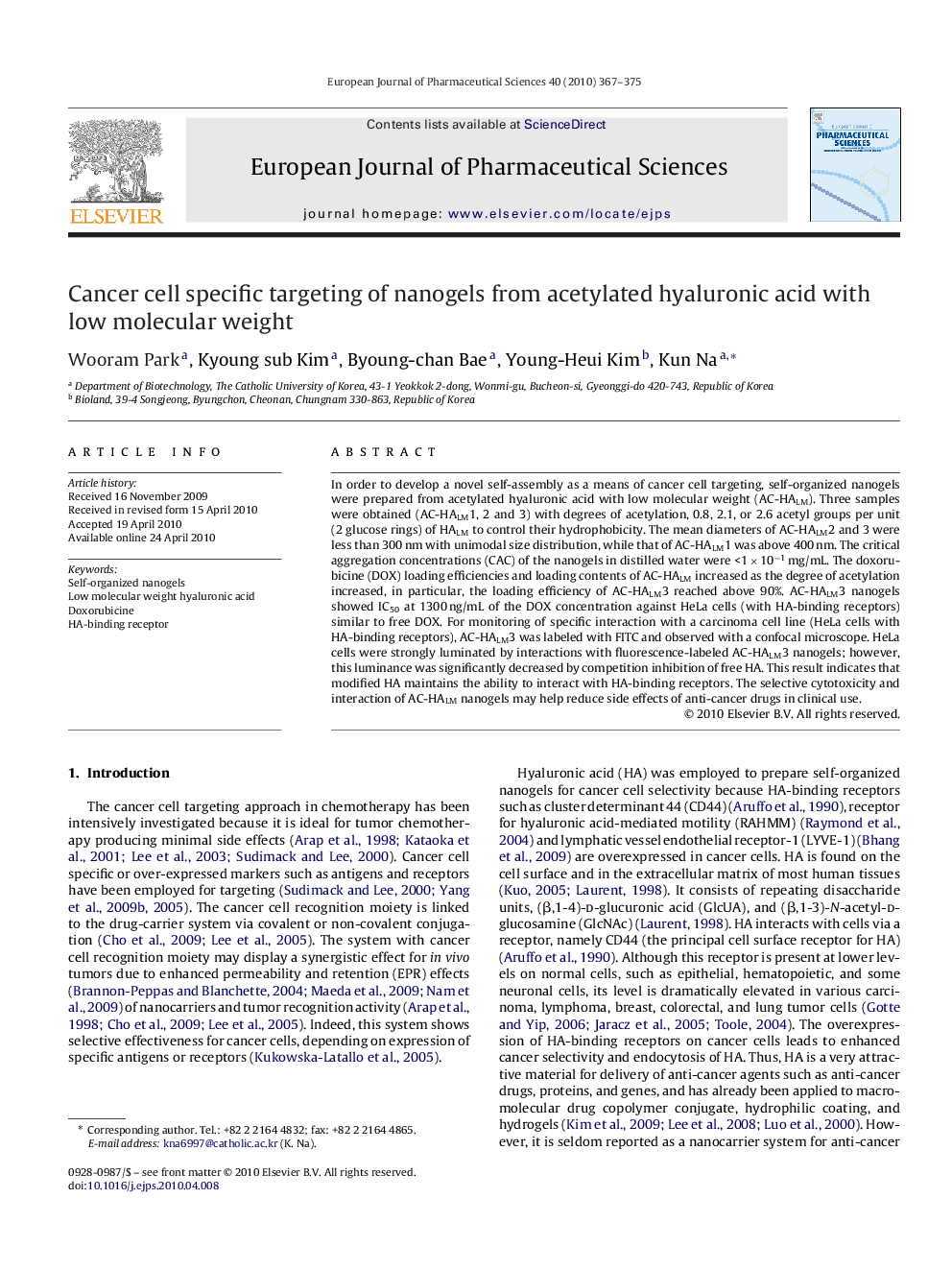| کد مقاله | کد نشریه | سال انتشار | مقاله انگلیسی | نسخه تمام متن |
|---|---|---|---|---|
| 2481603 | 1556244 | 2010 | 9 صفحه PDF | دانلود رایگان |

In order to develop a novel self-assembly as a means of cancer cell targeting, self-organized nanogels were prepared from acetylated hyaluronic acid with low molecular weight (AC-HALM). Three samples were obtained (AC-HALM1, 2 and 3) with degrees of acetylation, 0.8, 2.1, or 2.6 acetyl groups per unit (2 glucose rings) of HALM to control their hydrophobicity. The mean diameters of AC-HALM2 and 3 were less than 300 nm with unimodal size distribution, while that of AC-HALM1 was above 400 nm. The critical aggregation concentrations (CAC) of the nanogels in distilled water were <1 × 10−1 mg/mL. The doxorubicine (DOX) loading efficiencies and loading contents of AC-HALM increased as the degree of acetylation increased, in particular, the loading efficiency of AC-HALM3 reached above 90%. AC-HALM3 nanogels showed IC50 at 1300 ng/mL of the DOX concentration against HeLa cells (with HA-binding receptors) similar to free DOX. For monitoring of specific interaction with a carcinoma cell line (HeLa cells with HA-binding receptors), AC-HALM3 was labeled with FITC and observed with a confocal microscope. HeLa cells were strongly luminated by interactions with fluorescence-labeled AC-HALM3 nanogels; however, this luminance was significantly decreased by competition inhibition of free HA. This result indicates that modified HA maintains the ability to interact with HA-binding receptors. The selective cytotoxicity and interaction of AC-HALM nanogels may help reduce side effects of anti-cancer drugs in clinical use.
Journal: European Journal of Pharmaceutical Sciences - Volume 40, Issue 4, 11 July 2010, Pages 367–375